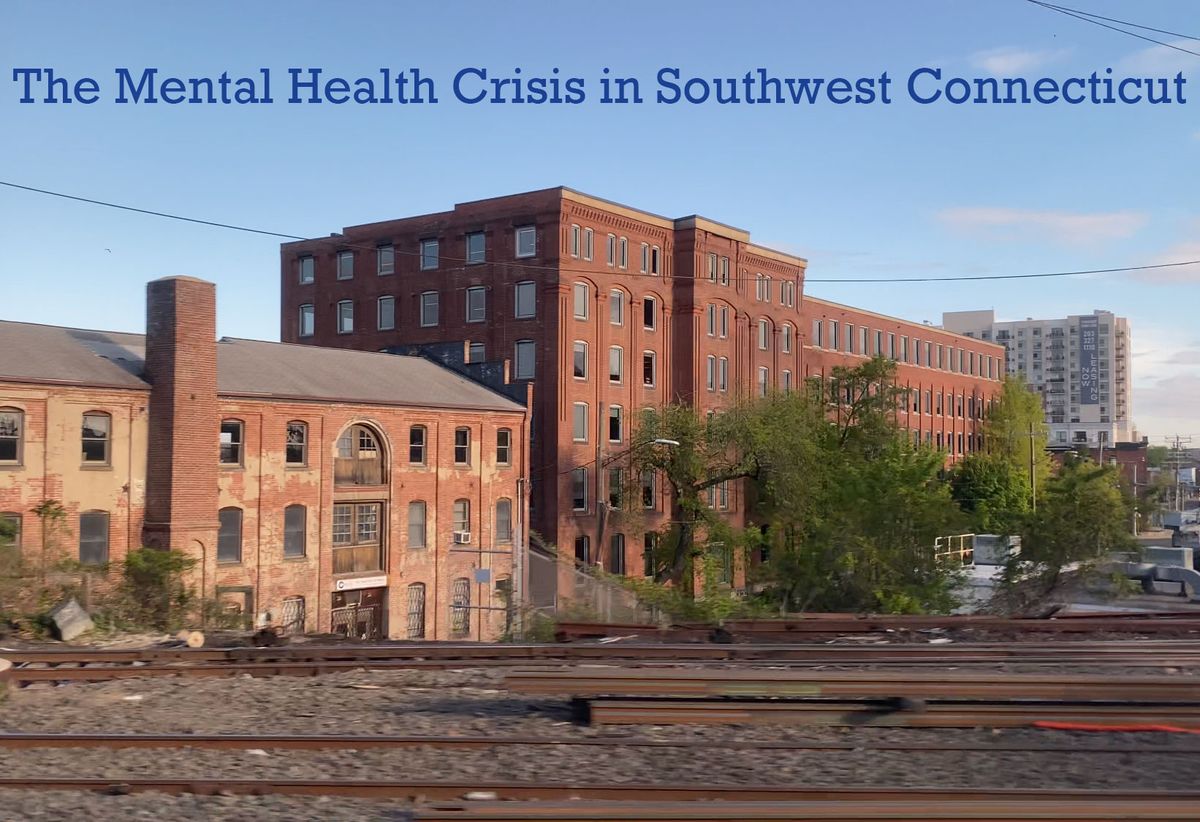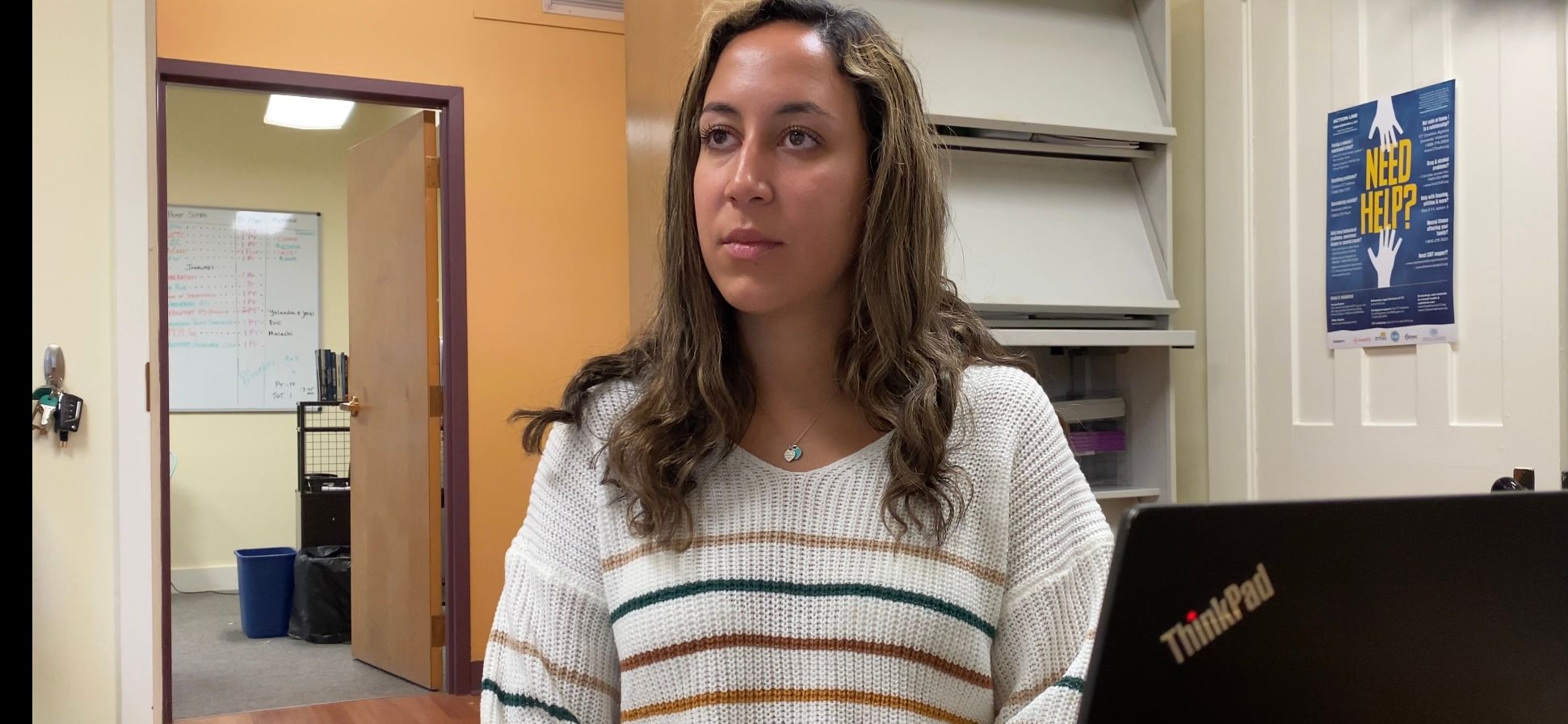‘Everything Has Been Magnified’: How Mental Health-Related Issues Are Impacting Southwest Connecticut
An increase in need, an increase in severity, and a lack of resources. Providers from southwest Connecticut shared how the mental health crisis is hitting the region.

For Georgette Harrison, it’s trying to help the children who are avoiding going to school, because they’re too anxious to be in the classroom. For Lamond Daniels, it’s working with the seniors who spent months and even years isolated in their homes, trying to avoid catching a deadly virus. For Emily Segal, it’s trying to reach the teenagers who have developed eating disorders and thoughts of self-harm. For Elizabeth Murdoch, it’s helping connect the families who are worn down trying to balance keeping their jobs, keeping their families safe, and keeping food on the table.
These are just a few examples from local mental health providers regarding the struggles our community is facing coming out of the COVID-19 pandemic.
“I think that the impact of the pandemic is still reverberating,” said Emily Segal, LCSW, a clinician in the Stamford High school based health center. “For these kids, mental health was in not a great state before the pandemic. Everything has been sort of magnified—the anxiety is worse, the depression is worse, the idea of [suicide] more common. Emergency rooms are overflowing, because we don't have enough pediatric mental health care for kids.”
Segal and other providers noted that many of these mental health challenges were already impacting the community before the pandemic, and have now been exacerbated.
“We're talking about how there's a mental health crisis right now, but we had a mental health crisis before the pandemic, a child mental health crisis way before,” said Georgette Harrison, LPC, NCC, and director of clinical and community partnerships for the Child Guidance Center of Southern CT. “Rates of depression and anxiety had increased significantly in the 10 years before the pandemic. The pandemic has only exacerbated something that was already there.”
The Hub, a regional organization for 14 towns in Southwest Connecticut that coordinates resources for mental health, as well as alcohol, substance use, and more, reported that the 2019 Connecticut School Health Survey showed that almost 70% of high school students said their past 30 day mental health was not good, particularly for female and LGBT students.
While children and teenagers have gained the most attention and have had some of the highest needs, some officials cautioned not forgetting about other age groups impacted, particularly seniors.
“Our seniors—they had it tough, because 65 and older, you have to be very careful. You didn't want COVID, because COVID will get you to the hospital,” said Lamond Daniels, the chief of Norwalk’s Community Services Department. “So our seniors really had to stay home and that’s social isolation.”
Data from the region also backs up that mental health issues had already been on the rise before the pandemic.
The 2018-19 National Survey on Drug Use and Health found there had been an increase in mental health related issues for those 18+ in the southwest CT region. The percentage of 18+ year olds with any mental illness increased from 16.22% in 2014-16 to 18.57% in 2016-18, while those with serious mental illness rose from 2.14% to 3.84% during the same time period.
The survey also found that the number of people using mental health services ticked up slightly in that period, from 15.2% to 15.76%, and that number has continued to climb.
Southwest Connecticut also had a slightly higher percentage than the state, 4.3% compared to 4.17% for those 18+ having serious thoughts of suicide.
While not a lot of local data is available for the most recent months, the 2021 Behavioral Health Priorities Report for Southwest CT from The Hub noted that: “Key informant interviews conducted in 2021 by The Hub identified a major concern regarding serious mental illness for southwest Connecticut is the effect of the COVID-19 pandemic on individuals, especially youth and young adults.”
Three overarching mental health-related challenges emerged from our interviews with local providers: an increase in the need for services, an increase in the severity of needs, and not enough providers and resources to meet those needs.
Providers across Southwest Connecticut share how mental health-related issues are impacting the region, what they're doing to try and provide support to residents, and what more needs to be done.
Increase in Need
Daniella Arias works as the program coordinator and certified health education specialist at The Hub, which has been conducting surveys and studies on mental health in the region.
“Based off of youth surveys that the schools complete, focus groups that we've done speaking with providers and other people in the region, we concluded some things—mental health is a serious issue, especially among our youth, but it is affecting the entire lifespan,” she said. “Mental health disorders are increasing dramatically among teens and young adults—depression, anxiety being the number one issues.”
According to 2021 survey data from The Norwalk Partnership, a local organization that that works to address issues related to substance use and mental health, almost 40% of Norwalk students in grades 7-12 who filled out the survey said that in the past year, they stopped doing some of their usual activities because they felt “so sad or hopeless almost every day for weeks or more in a row.”
Arias also noted that calls to crisis hotlines and services in the region have also been increasing and referrals from schools to local organizations as well, something that Gail Melanson, executive director of the Child Guidance Center of Mid-Fairfield County has seen directly.
“It's really, really a lot of need, and not enough resources in the community to meet that need—when people talk about the mental health crisis, I think that's what they're talking about,” Melanson said. “We've been hiring more staff—we have more staff than ever—and it's still not enough. All our programs are filled to capacity, just because there's so much need in the community.”
Segal said she believes the increase, at least for children and teens, could be due to the fact that they were isolated at home—especially if their homes weren’t the best place to be.
“Sometimes (they’re) in households that are not particularly safe, or where their depression is greater or their anxiety is greater, and school has been previously a safe space for them,” she said.
The pandemic also dramatically increased screen time, which Segal and Melanson both said have affected students' social skills, particularly how to listen and negotiate.
“They're thrown back into these social situations, and a lot of kids really are having difficulty coping and adjusting, because for two years, they were behind their laptops or iPads or phones, and now they're needing to be face-to-face with people, and a lot of people just don't know how to handle it,” Melanson said.
Harrison said that the increase in need has also been driven by people’s reactions to the “post-pandemic” world.
“There's been, I think, a subgroup of people that had a fantasy about what this was going to look like—the return to school— so they have very high expectations of what this was going to look like, not really thinking about the fact it's not going to look the way school did in 2019,” she said. “So I think that there was a pretty significant disappointment, in the fact that things didn't, they couldn't sort of pick up where they left off.”
But it’s not just kids, Elizabeth Murdoch, director of behavioral health at Family and Children’s Agency said, who have had increased challenges due to the pandemic.
“I think everything has escalated since the pandemic, but the world is not an easy place for children these days, and adults—there's so many challenges,” she said. “Probably two-thirds of our client base comes to us with anxiety. And it can be an adult with anxiety about job stability or meeting their basic needs.”
The 2018 Connecticut Behavioral Risk Factor Survey noted that 15.5% of adults had a doctor-diagnosed depressive disorder.
This has led some adults to turn to alcohol or drugs to cope with the pandemic-related challenges, such as job loss or having to try and teach your child while working.
“The parents have been tremendously challenged—we've seen an uptick in our referrals to our substance use program for women called Project Reward,” she said. “There's definitely been an uptick in use in both drugs and alcohol, which is continuing. Our census in that program is growing weekly.”

Increase in Severity
Daniels said through working with community providers, he’s seen the severity of needs increase as well.
“Providers will tell you that they have seen an increase in not just people accessing services, but a lot of times what we call the acuity, meaning people are really, really struggling,” he said.
Arias noted that the pandemic exacerbated the feelings of isolation that triggered depression and suicidal thoughts.
“Everyone has felt so isolated, and so alone, so suicidal ideation increased—especially among youth, as well as essential workers and even the elderly population, people were just lonely,” she said. “There have been some serious mental health struggles.”
Melanson said thoughts of suicide, particularly in younger and younger children, has really emphasized the severity of the crisis.
“A lot of kids coming with much more severe problems of suicide thoughts, suicide attempts, suicidal ideation, and unfortunately, we're seeing this younger and younger,” she said. “It used to be that we would see the risk of suicide in teens, and now kids are coming 9, 10, 11 years old thinking about suicide.”
According to data from the 2021 Norwalk Partnership survey of Norwalk Public Schools, 12.5% of students in grades 7-12 said they seriously considered attempting suicide within the last year and about 6.3% said they actually attempted suicide at least once.
Even before the pandemic, Harrison noted that suicide rates were already troublingly on the rise.
“The second leading cause of death was suicide and this was before the pandemic so things things were definitely not in a good place,” she said.
Melanson said they’re also seeing an increase in behavioral issues in children. All of these often stem from the trauma that children have experienced over the past few years, she said.
“Kids who are exposed to domestic violence, to community violence, to different kinds of disruptions in the home, kids have been placed in foster care due to abuse and neglect,” she said. “So there's a lot of kids who are pretty dysregulated, and the school is seeing it more so they’re making the referrals to us because kids can't be maintained in classrooms.”
Because the needs are more severe, that also impacts clinician capacity, Harrison said.
“These are kids that can't be seen once a week, which means that now as a clinician, there's a family waiting for treatment that now I can't see, because I have to see this family twice a week,” she said.
Segal, who also supervises all of the clinicians at school based health centers in Stamford, said that the increase in anxiety and depression has also led to an increase in eating disorders.
“This year—I've been here 20 years—more than ever, we're seeing more eating disorders,” she said. “And it’s that feeling of ‘it's the only thing that I can control in my life.’ Everything else is out of control—there’s a war in Ukraine. There's the pandemic, And so what can they control how much they put into their bodies.”
Harrison said that she’s also seen this play out through school avoidance, particularly for students who had social anxiety and now are reentering an in-school setting.
“The return to school has been really difficult for them—there's been a lot of school avoidance among that group,” she said.
Also students who struggled with virtual learning have had a hard time coming back, she said.
“They fell behind academically, and so they were embarrassed and very anxious about going to school and being called on, so they didn't want to go to school,” she said.
Lack of Resources
“If you have a physical problem, you're able to find medical care—whether it's in an urgent care center, or your primary care physician or an emergency room, you're able to find it,” Murdoch said. “It's not really the case with mental health.”
Murdoch said there’s often the perception that Connecticut, and in particular Fairfield County, is wealthy enough so it must have the resources.
“There’s not enough mental health resources,” she said. “The resources are very limited. We have literally in Norwalk, a handful of places to go for mental health treatment, maybe four. I think the assumption is that Connecticut is wealthy, so there must be lots of resources. And that's really not the case.”
Segal said that there’s been a serious lack of places she and others can refer students to at this time.
“There are really pretty significant wait lists for a lot of the outpatient programs that we will refer kids to,” she said. “There are waitlists for intensive outpatient programs, so that when kids are discharged from a psychiatric hospital, a step down would naturally be an intensive outpatient program—there may be a five-week waitlist for that.”
Because of that, Segal said she’s actually “held onto some of my students who graduated” and has been conducting their sessions during the afternoons when school is over.
While there’s a general need for mental health providers in the area, the biggest challenge is often finding a provider who can speak a second language, according to Arias.
“Providers who also speak another language are severely lacking in this region, and definitely throughout the state as well,” she said. “It's very difficult when you look in our region, and you see the amount of people who speak Spanish, the amount of people who speak French Creole—we have high Polish [populations], Portuguese [populations], so that has definitely been a struggle as well, and there’s a high need.”

Harrison said that “it’s a little bit like finding a unicorn,” when trying to find some providers that meet the needs of all the different communities.
She also noted that higher levels of care are even more challenging to find for people with more severe mental health challenges.
“There aren't a lot of spots for higher levels of care—things like intensive outpatient programs, partial hospitalization programs, that would be the more appropriate level of care for some of these kids,” she said. “It's difficult to find psychiatric beds, it's difficult to find a spot in an intensive outpatient program. And that's if you have insurance—if you don’t have insurance forget about it.”
Even if people are able to find a provider, paying for it is the next challenge.
“People are also struggling where to go and seek help, and those who are seeking help are seeing longer wait times, are struggling in finding providers who are within their insurance networks or low cost, things like that,” Arias said. “It's been a serious struggle.”
That’s often why providers go into private practice, Melanson said, because they don’t have to accept insurance and rely solely on those who can pay out of pocket. Getting insurance to cover mental health services can be challenging, she said, and even if they do, her center gets a lower rate than what private practice can charge.
For example, if a patient comes into the Child Guidance Center of Mid-Fairfield County with the state’s HUSKY insurance plan, Melanson said they get a little more than $80 for a three-hour course of treatment that often includes psychiatric services.
“For regular outpatient therapy, a private practitioner in the community can charge $200, she said. “And sometimes we'll get $68 or $70, for a therapy session from commercial insurance.”
Melanson said that they also often get denied because “insurance companies are banking on the fact that you're not going to have the manpower to follow up with denials.”
“The insurance companies make it as challenging as possible,” she said. “So we have to dedicate a lot of resources just to recouping the money that is owed to us for sessions.”
Daniels said that it’s important for people to realize that access to mental health care means a lot of different things and causes multiple challenges for providers.
“On the provider side, there’s capacity, there’s acuity—are we able to meet the needs of the people?” he said. “And then access, not just access to services, but costs, right? There’s challenges with those that are uninsured and underinsured—it's a whole gamut of when we talk about mental health and how people have been impacted through COVID.”



